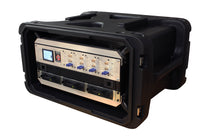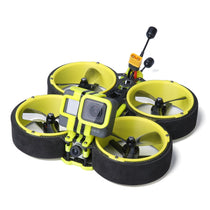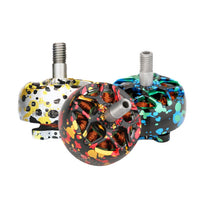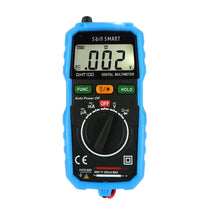ImmersionRC RF Power Meter V2
Is the latest whiz-bang hype-train vTx really as good as the datasheet claims? Does it really emit 25mW on all race channels? Does it still emit 25mW 30 minutes later? The RF Power Meter v2 allows these questions and many more to be answered.
Back in the early days of FPV racing ImmersionRC pioneered low-power racing, where everyone runs 25mW. This became a world-standard within a few short months and continues to be the standard today. The Power Meter v2 gives you the measurement tool that you need to test transmitters before you get surprised at the next race.
With the included stubby dipole, the RF Power Meter v2 is all that you need to perform a rough power test on any FPV platform, even without unscrewing its antenna. Calibrate the meter on a ‘known good’ platform, and walk down the start grid testing each quad ready to race. Quads accidentally set on high power, or those with hardware/cable/connector/antenna problems emitting a few micro-watts are identified before the first gate.
So you know that ‘packets’ of data are flowing from your RC Tx, or Long Range system, to your model… but what if you could ‘see’ them? The PowerScope mode of the RF Power Meter v2 presents you with a visual representation of the power being emitted from your radio. How fast are the packets emitted? Are the multitude of antennas on your radio working? Where are they? What orientation? You can even spot transmitters which comply with LBT (listen before talk), or Duty Cycle limitations.
Analog Video Transmitters emit a steady stream of RF goodness. RC Controllers emit a stream of pulsed goodness (which just happens to be heading in the opposite direction). The RF Power Meter v2 can deliver accurate power measurements for both types of RF signals.
The v2 contains an integrated Lithium Ion battery, which will power the meter for at least 8 solid hours. With auto-shutdown after periods of inactivity, a single charge will power your meter for days at the race track. Recharged using a standard micro-USB connector in less than one hour.
| Input Voltage | 3.7V |
| Current Draw | <35mA |







 RF Power Meter Manual
RF Power Meter Manual